2002 North Main Street
Santa Ana, California 92706
TEL: 714.567.3600
Following Townsend to Abstraction
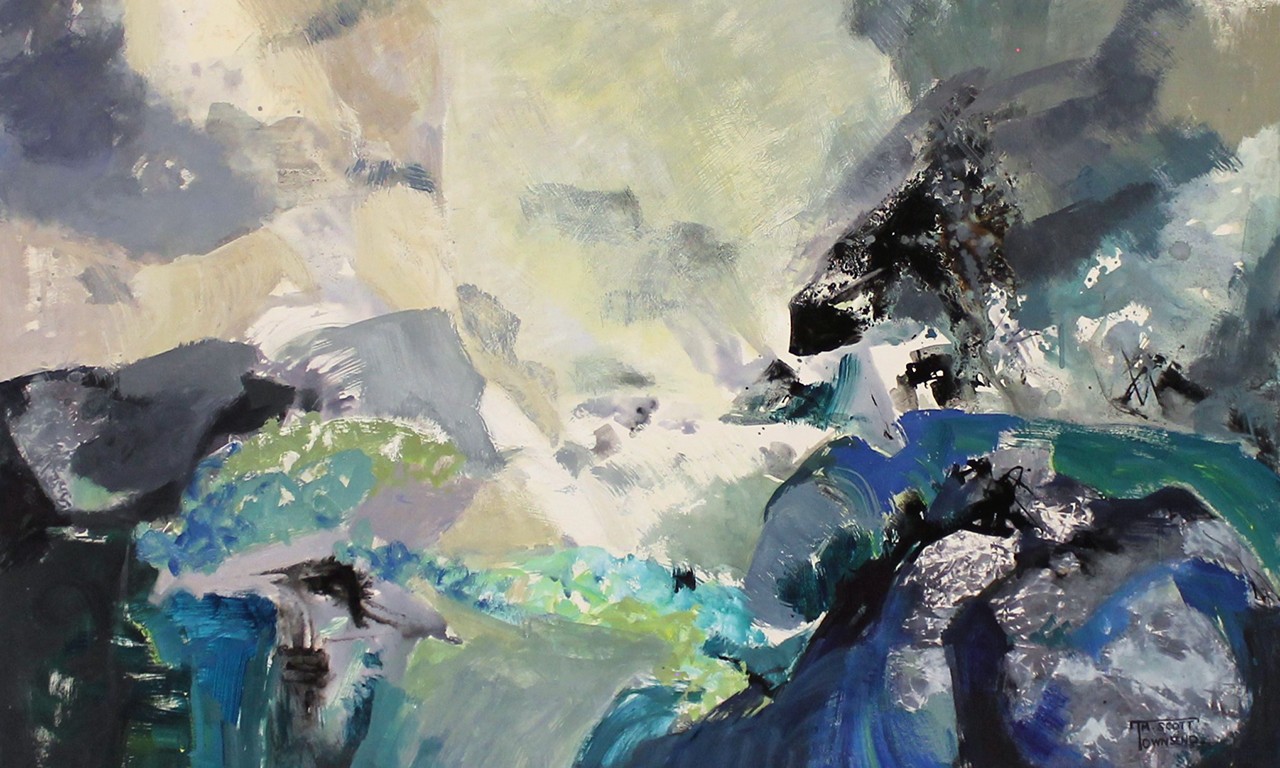 |
| Turbulence, 1960s Mildred Scott Townsend, American, (1897-1985) Mixed media on silk; 40 x 50 in. F80.40.5 Gift of the Artist |
A Blur
You can lose the forest for the trees, and sometimes it takes getting farther away from something to really be able to see it. Mildred Scott Townsend, an early and mid 20th century Californian painter likely understood this on multiple levels. And in a year which seems increasingly surreal and uncertain despite how much it should have been afforded the clarity of 20-20 vision, perhaps it is fitting to examine her paintings, because though she began working in semi-pictorial styles, following the trends of American art in the 1950s she found her calling in an art movement antithetical to photorealistic depiction: abstraction. Today’s post begins with her life, before following her journey into the nonrepresentational and studying how the tone of her works changed when their forms became blurred.
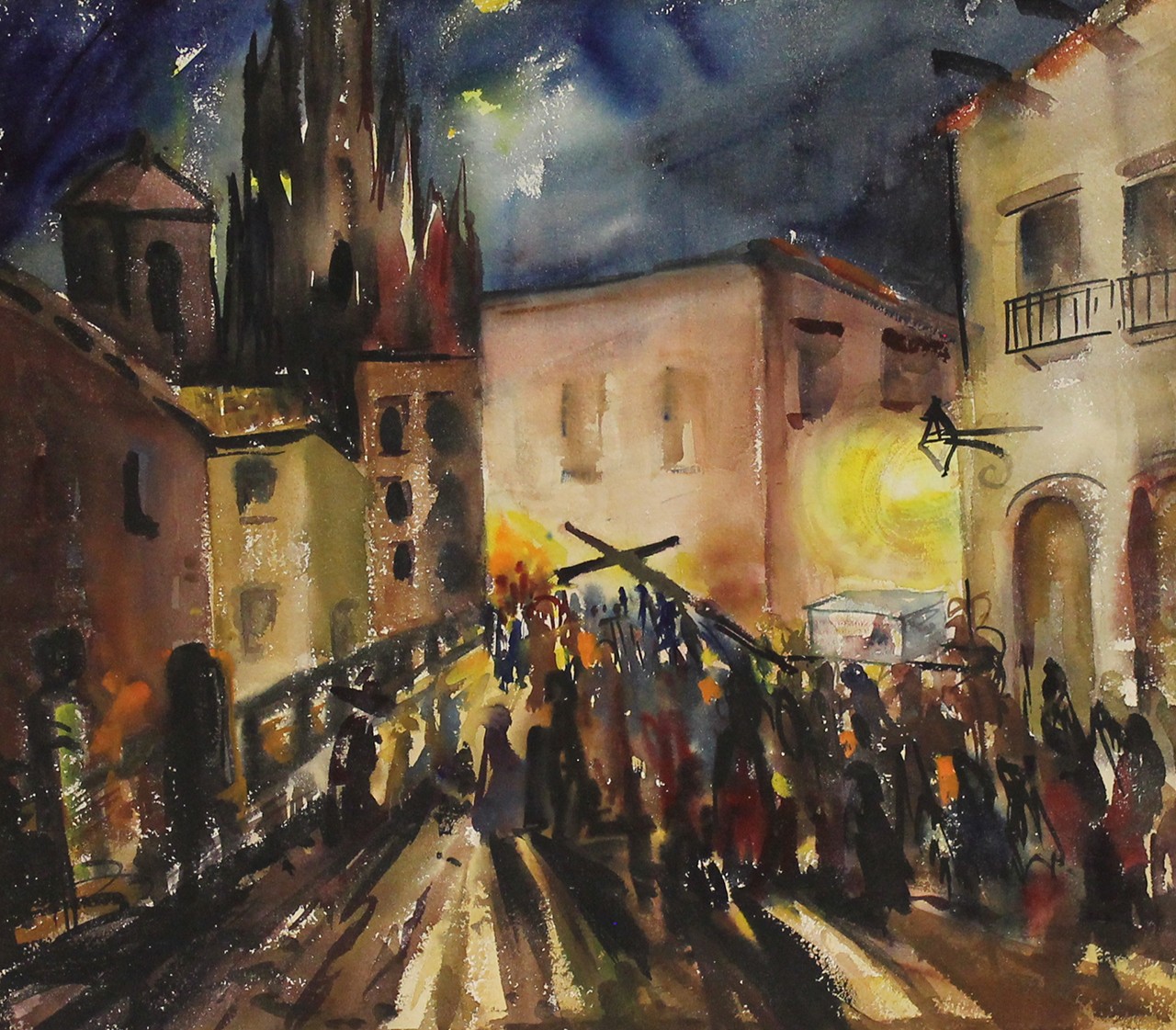 |
| Procession, San Miguel de Allende, 1953 Mildred Scott Townsend, American, (1897-1985) Watercolor on paper; 30 x 32 in. F80.40.8 Gift of the Artist |
Brush with Death
Mildred Mae Scott was born in Oregon, Illinois on September 13, 1897 to a Methodist family. Daughter to a reverend, she and her family travelled across the Midwest to congregations in need. Her childhood was in many ways a pastoral one. Tales abound of a pair of Bantam chickens named Uncle Ben and Aunt Sarah who would follow her around her home, of meeting Helen Keller and feeling the warmth of her immense kindness, and always of painting. As a child she breathed art, not even remembering a time she did not love practicing her brushwork. She studied painting in college and eventually attended the Art Institute of Chicago. In 1921 she married her husband and partner for the next 59 years, Elmer Scott Townsend, taking his last name. At a young age she had a close brush with death, contracting tuberculosis and forcing the couple to move to a drier climate. She survived the bout though and in 1935 the married couple moved to California which would be a home base for them for much of the rest of their lives.
| Medieval Man #1, 1956-59 Mildred Scott Townsend, American, (1897-1985) Oil on canvas; 20 x 30 in. F80.40.13 Gift of the Artist |
Restless, 1960-1964 Mildred Scott Townsend, American, (1897-1985) Gouache and oil on canvas; 20 x 30 in. F80.40.13 Gift of the Artist |
New Groove
The late 1950s and ‘60s marked a shift away from the regionalist Californian style of the early postwar era. To change her own approach with the times, Townsend took a night school class at Pomona Junior College taught by Richards Ruben, a well-known Southern Californian abstract painter and teacher. One of his methods of instruction was to take a painting done by one of his students in their own style, and then add brushstrokes to make it increasingly abstract. When Townsend first started the course, Ruben characterized her work as being “too precious,” feeling that it would gain some clarity through abstraction. She took the collaborative result home and feeling inspired immediately painted two more in that same style, thus creating her Medieval Man #1-#3. Happy with finished works, she then proceeded to continuously paint in that style until shortly before her passing.
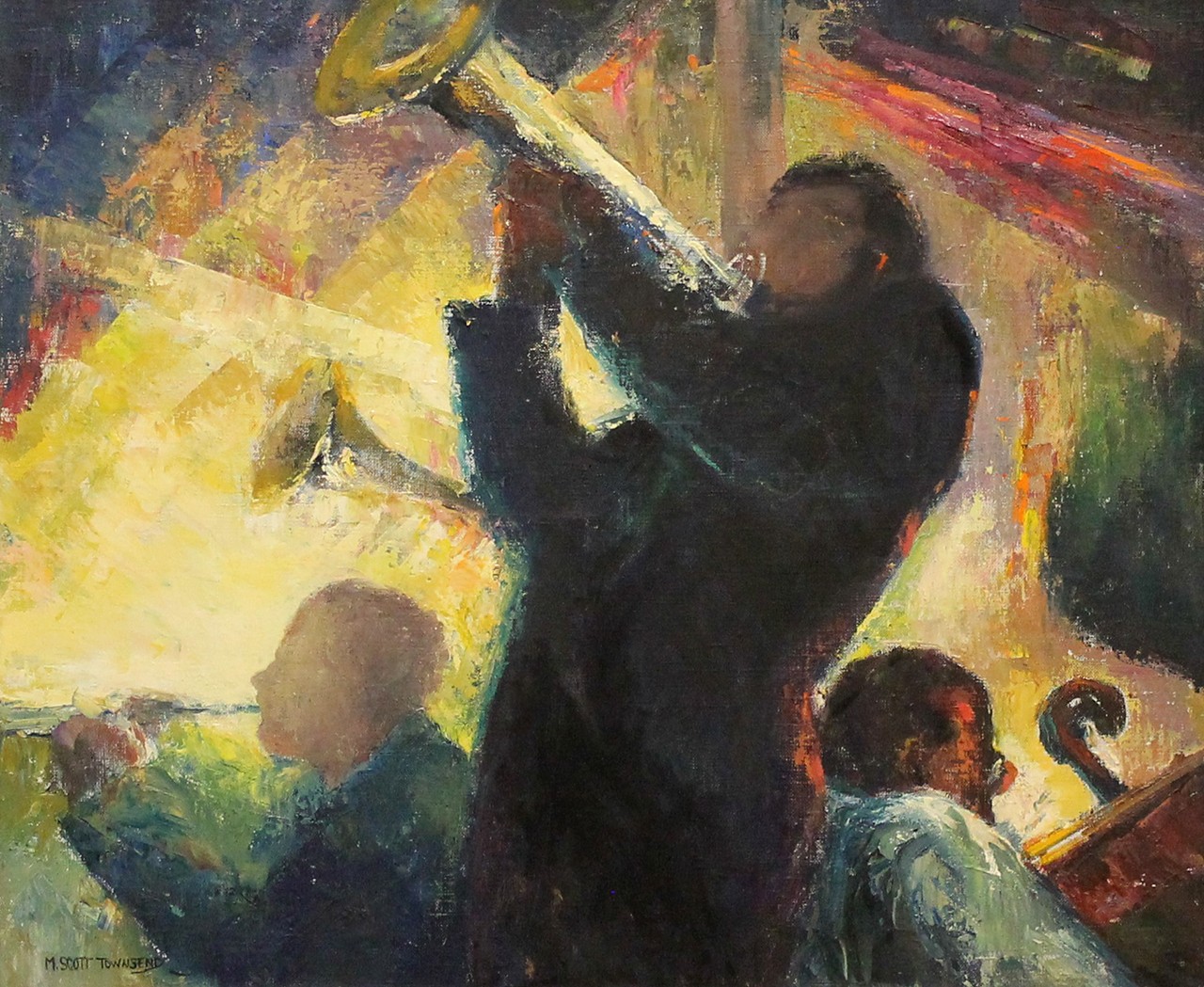 |
| Celebration, 1956-1959 Mildred Scott Townsend, American, (1897-1985) Oil on canvas; 20 x 24 in. F80.40.23 Gift of the Artist |
Some Exceptions
The artist donated a large group of these abstract works to the Bowers Museum in 1980, just five years before her passing and in the same year that her husband died. It is an interesting collection for the Bowers Museum—almost atypical within our Fine Art Collection on the sheer merit of being post-modern—but it is also fascinating in that it so completely shows one facet of Townsend’s production. Certainly, there are exceptions to this: Procession, San Miguel de Allende is an earlier work with strong influences from California regionalist painters. Even that it is a watercolor painting on paper seems to parallel artists like Millard Sheets who worked in the same medium. Her late 1950s painting, Celebration, trumpets a much earlier impressionistic style, though perhaps showing a shift towards the vibrancy of color and sense of movement of her eventual abstract works. But Townsend’s abstract works take on entirely unique, otherworldly air, characteristic of nonrepresentational art.
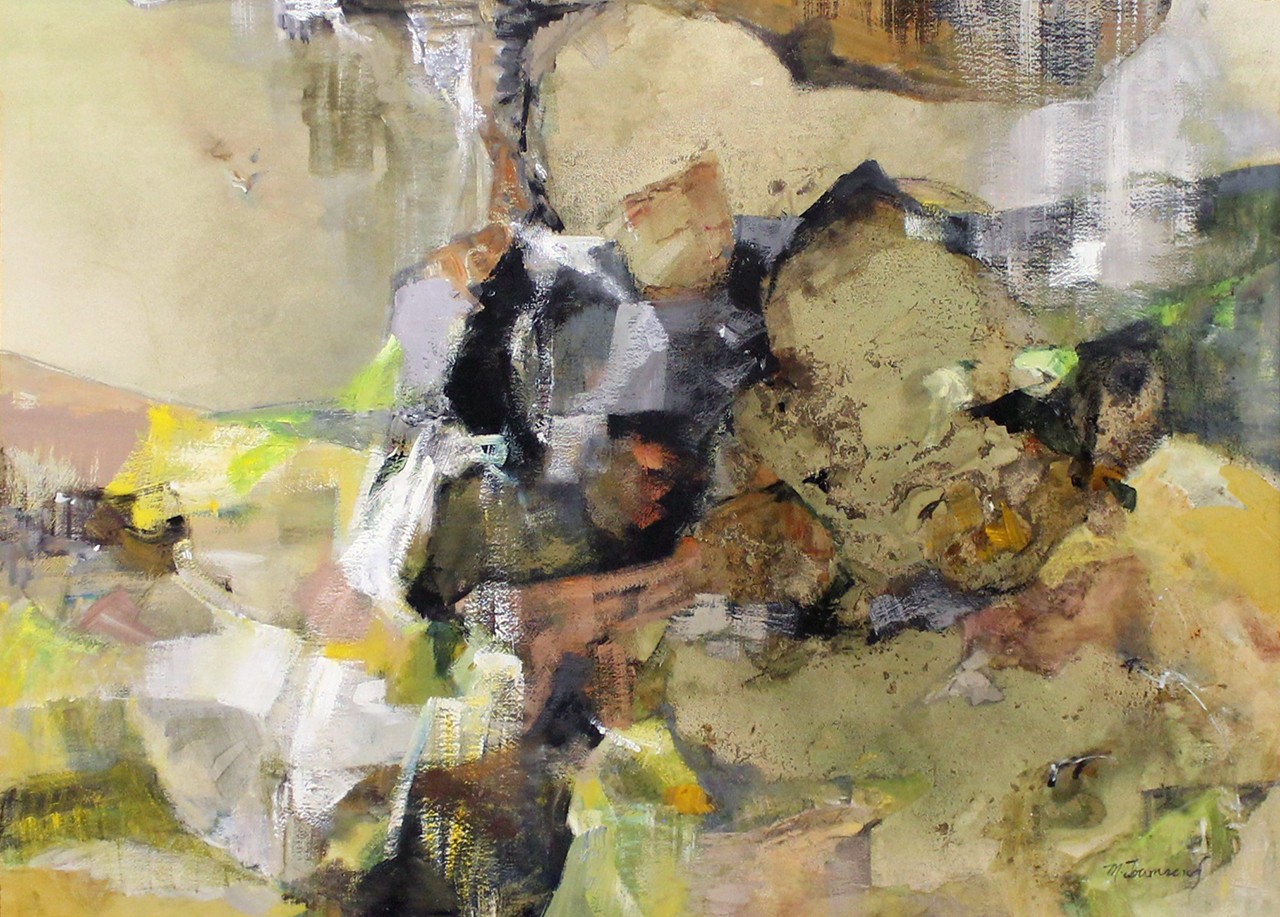 |
| Spring in Glacier Park, 1961 Mildred Scott Townsend, American, (1897-1985) Gouache and mixed media on paper; 40 x 50 in. F80.40.17 Gift of the Artist |
Glaucomic Eyes
Though she never considered herself married to any school of painting, Townsend’s abstract paintings were better received than her landscape paintings had been, winning multiple awards and earning her a reputation for the style of work. A scholar commenting on her paintings noted that they did exactly what the style should do, interpret rather than imitate. This is the integral kernel of abstraction: composition and subject matter are still present, and yet take a back seat to visual concepts that are themselves more difficult to define, such as rhythm. Works are glaucomic, and in many cases convey a strong sense of unease. This is only further corroborated by titles such as Turbulence and Restless. As disparate elements seem to battle for space on the canvas in the same way their antecedent waves and rocks have been eternally locked in an ebbing and flowing struggle for the shore, even Richards Ruben would not condescend to calling Townsend's abstract works precious.
Text and images may be under copyright. Please contact Collection Department for permission to use. Information subject to change upon further research.

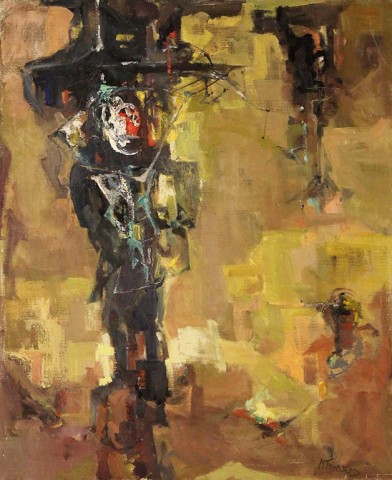
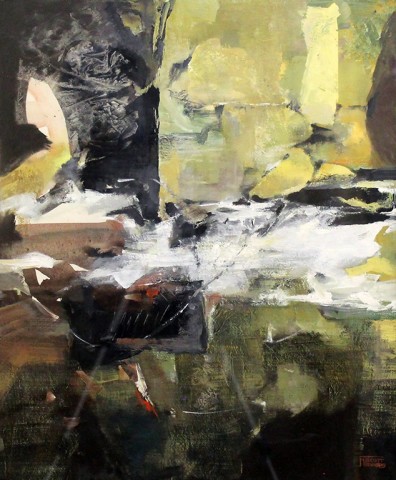
Comments